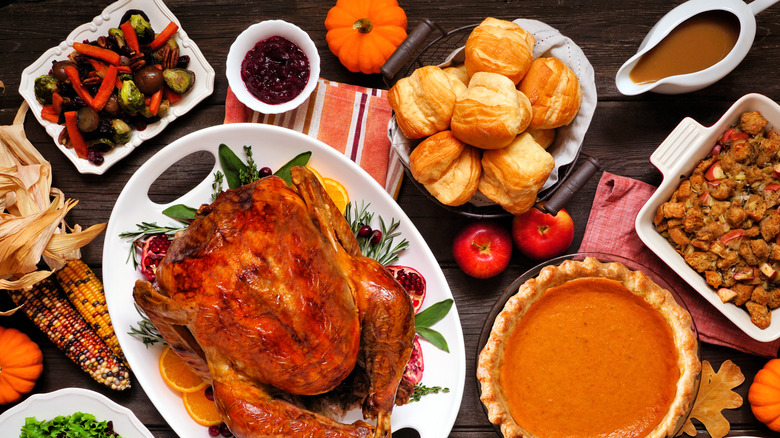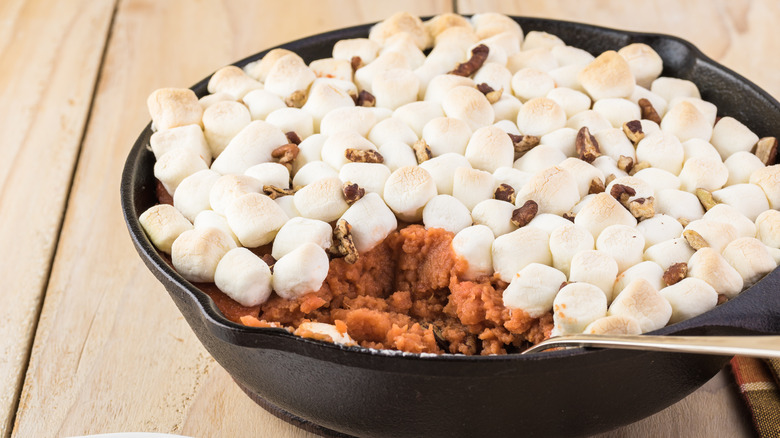The Thanksgiving Side That Started As A 20th Century Social Experiment
With Thanksgiving just weeks away, it is estimated that Americans will spend roughly $1.1 billion on turkeys this year (via Finder). This highlights how the festive fowl anchors the big American gathering of friends and families. And while many will eat turkeys galore, many popular side dishes have become associated with the big day as well. Whether it's warm yeast rolls, green bean casserole, or cranberry sauce, the dinner doesn't feel complete without whatever side you prefer to round out your meal.
Ever wonder how some of these items became a part of the tradition? One popular dish, in particular, was the unexpected result of a social experiment. Before we reveal the what and why let's review a quick fact on the American holiday itself.
Why is the holiday the second to last Thursday of November? According to History Extra, President Franklin D. Roosevelt was concerned that the last Thursday of November 1939 was also the last day of the month. His worry centered around the premise it shortened the time for Christmas shopping which could have dampened the economic recovery from The Great Depression. So, he proclaimed that the second to last Thursday would become the day of gratitude.
How marketing brought us a popular Thanksgiving side
Thanksgiving has inspired dishes that would become a regular around the holiday. While each has an origin story, one of the most unique is the sweet potato casserole. With its base of sweet potato pie mix topped with toasted marshmallows, the decadent treat has the duality of being a side dish served along with the turkey as well as an after-dinner dessert. However, how did the combination come to be? Well, in short, clever marketing.
According to The New York Times, by 1901, marshmallows were served in baskets as a Thanksgiving dessert. However, advertisers began to notice that people were starting to incorporate marshmallows into some of their recipes. Atlas Obscura further explains that in 1915, a sales and advertising journal performed a case study around "Advertising New Uses for an Old Product" and used Bunte Brothers' marshmallows as the old product.
Up until then, marshmallows were marketed as desserts. They released a cookbook appealing to homemakers about different ways the marshmallow could be used as an ingredient. After an aggressive and successful marketing campaign, the perception of marshmallows began to change.
Then in 1917, the Angelus company released their marshmallow cookbook that included what is believed to be the first sweet potato casserole recipe. From there, the rest is history.
While marshmallows are commonplace now, it is nice to reflect on a time when it was still considered a novel delicacy.

